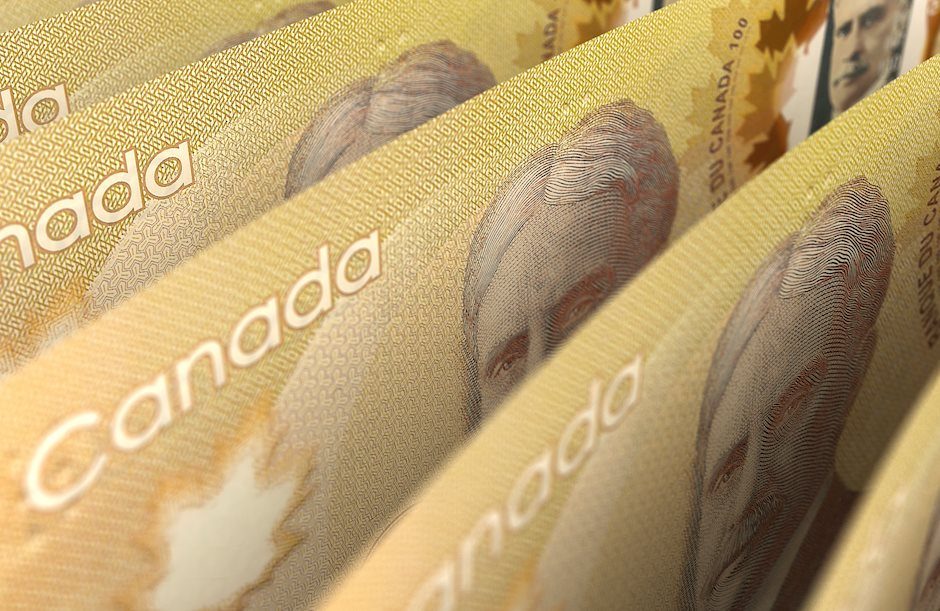USD/CAD consolidates its gains above 1.3650, eyes on Canadian CPI, US Retail Sales data
- USD/CAD trades flat with mild losses near 1.3680 in Tuesday’s early Asian session.
- Fed’s Powell said the central bank will not wait until inflation hits 2% to cut interest rates.
- Lower crude oil prices weigh on the commodity-link CAD.

The USD/CAD pair consolidates its gains around 1.3680 during the early Asian session on Tuesday. The Greenback recovers some lost ground as traders await the Canadian Consumer Price Index (CPI) inflation data and US Retail Sales on Tuesday for fresh impetus. Also, Federal Reserve’s (Fed) Adriana Kugler is set to speak.
Fed Chair Jerome Powell said on Monday that the US has performed remarkably well in recent years, adding that the central bank won't be waiting until inflation reaches the 2% annual target. Meanwhile, Fed Bank of San Francisco President Mary Daly did not provide time-based rate cut guidance, but acknowledged significant progress on inflation.
The odds for Fed rate cuts in September increase after the cooler US inflation data last week, which might weigh on the US Dollar (USD). Traders continue to anticipate a September rate cut followed by further cuts in November and December, bringing the policy rate down to 4.5%-4.75% by year-end.
On the other hand, the Bank of Canada (BoC) Business Outlook Survey on Monday showed that business and consumer expectations for inflation are subdued. “By in large, all of the data or most of the data that is included in that report could be used by Bank of Canada later this month in order to cut rates by a further 25 basis points,” David Doyle, managing director and head of economics at Macquarie Group, said. Meanwhile, the fall of crude oil prices might drag the commodity-linked Canadian Dollar (CAD) lower and cap the pair’s downside as Canada is the major crude oil exporter to the United States.
Canadian Dollar FAQs
The key factors driving the Canadian Dollar (CAD) are the level of interest rates set by the Bank of Canada (BoC), the price of Oil, Canada’s largest export, the health of its economy, inflation and the Trade Balance, which is the difference between the value of Canada’s exports versus its imports. Other factors include market sentiment – whether investors are taking on more risky assets (risk-on) or seeking safe-havens (risk-off) – with risk-on being CAD-positive. As its largest trading partner, the health of the US economy is also a key factor influencing the Canadian Dollar.
The Bank of Canada (BoC) has a significant influence on the Canadian Dollar by setting the level of interest rates that banks can lend to one another. This influences the level of interest rates for everyone. The main goal of the BoC is to maintain inflation at 1-3% by adjusting interest rates up or down. Relatively higher interest rates tend to be positive for the CAD. The Bank of Canada can also use quantitative easing and tightening to influence credit conditions, with the former CAD-negative and the latter CAD-positive.
The price of Oil is a key factor impacting the value of the Canadian Dollar. Petroleum is Canada’s biggest export, so Oil price tends to have an immediate impact on the CAD value. Generally, if Oil price rises CAD also goes up, as aggregate demand for the currency increases. The opposite is the case if the price of Oil falls. Higher Oil prices also tend to result in a greater likelihood of a positive Trade Balance, which is also supportive of the CAD.
While inflation had always traditionally been thought of as a negative factor for a currency since it lowers the value of money, the opposite has actually been the case in modern times with the relaxation of cross-border capital controls. Higher inflation tends to lead central banks to put up interest rates which attracts more capital inflows from global investors seeking a lucrative place to keep their money. This increases demand for the local currency, which in Canada’s case is the Canadian Dollar.
Macroeconomic data releases gauge the health of the economy and can have an impact on the Canadian Dollar. Indicators such as GDP, Manufacturing and Services PMIs, employment, and consumer sentiment surveys can all influence the direction of the CAD. A strong economy is good for the Canadian Dollar. Not only does it attract more foreign investment but it may encourage the Bank of Canada to put up interest rates, leading to a stronger currency. If economic data is weak, however, the CAD is likely to fall.
Author

Lallalit Srijandorn
FXStreet
Lallalit Srijandorn is a Parisian at heart. She has lived in France since 2019 and now becomes a digital entrepreneur based in Paris and Bangkok.

















